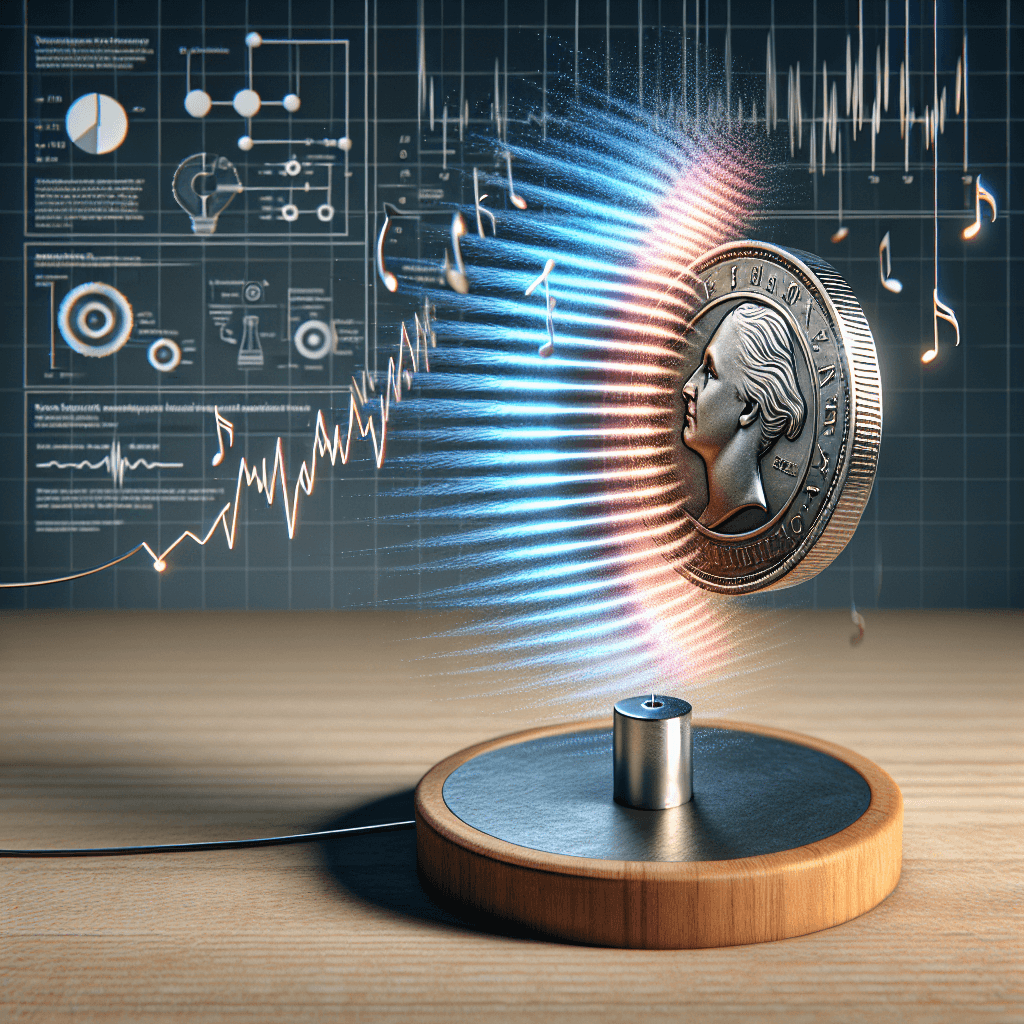Why does a spinning coin's hum get faster and higher pitched before it falls flat
It's a sound we all know but few understand: the frantic, rising whir of a spinning coin's final moments. Discover the elegant physics that turn a simple wobble into a dramatic, high-pitched crescendo.


Too Long; Didn't Read
TLDR: As the coin loses energy to friction, its tilt increases. This wider tilt angle forces the point touching the surface to travel around the coin's edge much faster, causing the frequency of the tapping sound, and thus its pitch, to rise sharply until it falls flat.
The Physics of the Final Spin: Why does a spinning coin's hum get faster and higher pitched before it falls flat?
We’ve all done it. Spun a coin on a desk or countertop, mesmerized by its wobbly dance. As it loses steam, something peculiar happens. The gentle whirring transforms into a frantic, high-pitched hum that rises in a dramatic crescendo just before the coin clatters to a stop. This isn't just a simple sound of an object slowing down; it's a fascinating display of physics in action. But what exactly is happening in those final, frantic moments? This post will break down the science behind the coin's captivating swan song, exploring how friction and energy work together to create that iconic, accelerating sound.
The Two Key Players: Energy and Friction
When you first spin a coin, you give it a large amount of kinetic (rotational) energy. It stands nearly upright, spinning rapidly around its vertical axis. At this stage, the coin is relatively stable, and the primary sound is a low, gentle hum.
However, two relentless forces are immediately at work to steal this energy:
- Surface Friction: The edge of the coin isn't a perfect point. As it spins, it scrapes and rolls against the tabletop, creating friction that converts rotational energy into heat and sound.
- Air Resistance: The faces of the spinning coin push against air molecules, creating drag that also saps its energy.
As the coin loses energy, it can no longer maintain its upright, stable spin. This is where the magic begins.
The Wobble Takes Over: Explaining Precession
Unable to spin perfectly upright, the coin begins to tilt. This tilt introduces a new type of motion called precession—you know it as the "wobble." Instead of just spinning on its own axis, the coin's axis of rotation now starts to trace a small circle itself.
Here’s the crucial part: The sound we hear is not primarily from the coin spinning, but from the rapid tapping or rolling of the coin's contact point against the surface. As the coin wobbles, this contact point races around in a circle on the tabletop.
Why the Pitch Rises
The relationship between the coin's energy, its tilt, and the speed of its wobble is the key to understanding the rising pitch.
- Energy Loss and Increased Tilt: As friction continues to drain the coin's energy, it leans over more and more. Its angle relative to the tabletop becomes more acute.
- A Faster Wobble (Precession): To conserve what's known as angular momentum, a fundamental principle in physics, a wider tilt forces the precession (the wobble) to speed up dramatically. Think of an ice skater pulling their arms in to spin faster; it's a related concept. The coin trades its spinning speed for wobbling speed.
- Higher Frequency, Higher Pitch: Since the sound is generated by the contact point circling the surface, a faster wobble means the contact point is completing its circuit more frequently. This increased frequency of tapping/rolling is what our ears perceive as a higher-pitched sound.
In short: Less Energy → Wider Tilt → Faster Wobble → Higher Frequency Sound.
This process happens in a runaway feedback loop. The more the coin tilts, the more surface area comes into contact with the table, increasing the rate of energy loss and forcing an even faster wobble, until the frequency rises almost infinitely in the final milliseconds. This phenomenon is so pronounced that scientific toys like "Euler's Disk" have been designed to demonstrate it, spinning for minutes and producing an incredibly dramatic final hum.
The Final Clatter
Eventually, the coin's angle becomes so severe that it can no longer maintain the rolling motion. Viscous friction from the thin layer of air trapped underneath the coin becomes the dominant force, rapidly braking the motion. The organized hum collapses, and the coin finally slaps down onto the surface with a definitive clatter. The show is over.
So, the next time you spin a coin, listen closely. You're not just hearing an object run out of energy; you're hearing a beautiful and audible demonstration of complex physical principles. That frantic, rising hum is the sound of the coin desperately trying to conserve its angular momentum in a losing battle against friction, a final, high-frequency cry before it succumbs to rest. It’s a perfect, pocket-sized example of the elegant physics that governs our world.


